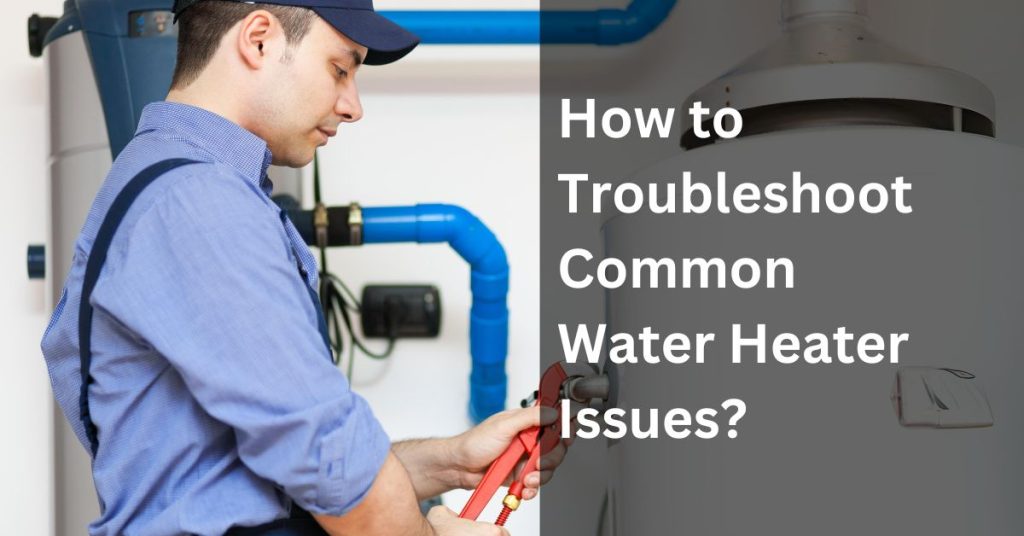Currently Empty: $0.00
How to Detect Early Warning Signs of Water Heating System Problems?
Your water heater is an essential part of your home, providing hot water for many everyday tasks, from washing dishes and doing laundry to taking showers. Because it’s used so frequently, it’s easy to take for granted until it breaks down. When your water heater malfunctions, it can cause major disruptions and inconvenience in your daily routine. Catching problems early on can help you avoid costly repairs or even having to replace the entire system.Early detection of issues in your water heater can prevent further damage, help maintain energy efficiency, and ensure your safety.
Contents
- 1 Why Is Early Detection So Important?
- 2 These are the Early Warning Signs of Water Heating Procedure
- 2.1 1. Inconsistent Water Temperature
- 2.2 2. Strange Noises Coming from the Heater
- 2.3 3. Water Discoloration
- 2.4 4. Low Water Pressure
- 2.5 5. Leaks or Moisture Around the Heater
- 2.6 6. Age of the Water Heater
- 2.7 7. Slow Recovery Time
- 2.8 8. Rising Energy Bills
- 2.9 9. Pilot Light or Burner Issues (For Gas Water Heaters)
- 2.10 10. Unusual Smells
- 3 Safeguarding Your Hot Water Supply: Recognizing Warning Signals
Why Is Early Detection So Important?
Spotting early warning signs of water heating system issues with your water heater allows you to address issues while they’re still small and manageable. Water heaters are often out of sight, and we tend to overlook them until a serious issue occurs. However, neglecting minor issues can lead to bigger issues, such as leaks, rust, or even complete system failure. Early detection saves you money by preventing the need for major repairs or replacements.
In addition to financial savings, early detection also enhances safety. Water heaters can pose risks if not properly maintained, such as gas leaks in gas-powered systems or electrical malfunctions in electric models. Regular inspections and being aware of potential warning signs can reduce these risks. Ultimately, catching problems early helps you prolong the life of your water heater and ensures that your home’s water supply remains efficient and reliable.
These are the Early Warning Signs of Water Heating Procedure
1. Inconsistent Water Temperature
One of the first warning signs of a issue with your water heater is inconsistent water temperature. If you notice that the water is sometimes too hot, too cold, or fluctuates between the two, it could indicate a malfunctioning thermostat or a buildup of sediment in the tank.Over time, this layer of sediment can insulate the heating element, making it difficult for the system to maintain a steady temperature.
Solution:
Adjust the Thermostat: Ensure the thermostat is set to the desired temperature (typically between 120°F and 140°F). If adjustments don’t help, consider replacing the thermostat.
Inspect Heating Elements: For electric water heaters, check the heating elements for signs of failure. A faulty element may require replacement to restore consistent heating.
2. Strange Noises Coming from the Heater
Your water heater should operate quietly. If you start to hear strange sounds like popping, banging, or rumbling, this is often a sign of trouble. These noises are usually caused by the buildup of sediment at the bottom of the tank. As the water heats, it causes the sediment to harden and move around, creating noise.Ignoring these sounds can lead to further damage. The buildup of sediment can cause the system to overheat, reduce the efficiency of the heater, and even lead to leaks.
Solution:
Flush the Tank: If you hear banging or popping sounds, it may be due to sediment buildup. Flushing the tank can remove sediment and restore normal operation.
Check Heating Elements: If hissing or sizzling sounds persist, inspect the heating elements for wear and replace them if necessary.
3. Water Discoloration
Rusty or discolored water coming from your faucets is another clear indication that something might be wrong with your water heater. This is often a sign that the tank is corroding from the inside. Over time, the interior of the water heater can rust, especially if the anode rod (a component designed to attract corrosion) is no longer functioning properly.While temporary discoloration can occur due to issues with the water supply, ongoing rust-colored or cloudy water is a more serious heating system issues.
Solution:
Flush the Tank: Flushing can help eliminate sediment and bacteria. To address foul odors, you might also consider:
- Replacing the Anode Rod: If the anode rod is corroded, replacing it can help improve water quality.
- Hydrogen Peroxide Treatment: For severe bacterial growth, adding hydrogen peroxide to the tank can help sanitize it. Follow manufacturer instructions and consult a plumber if necessary.
4. Low Water Pressure
If you notice that your water pressure has dropped, particularly when using hot water, this could be due to a problem with your water heater. Mineral buildup inside the tank and pipes can restrict water flow, causing reduced pressure. Over time, this buildup not only affects pressure but also puts a strain on the system, making it work harder and less efficiently.Low water pressure may also be a sign of a leak or clog in the plumbing connected to your heater.
Solution:
Flush the Water Heater: Flushing your water heater is a critical step to remove mineral buildup that can restrict water flow and contribute to low water pressure.
Inspect for Leaks and Clogs: Inspect for leaks by checking visible pipes connected to the water heater for any damp spots or water stains, which may indicate a leak. For clogs, remove aerators from faucets and clean them, or use a plumbing snake to clear blockages in the pipes to restore proper water flow.
5. Leaks or Moisture Around the Heater
Any time you see moisture, leaks, or puddles around your water heater, it’s a sign that something is wrong. Even small leaks can indicate bigger issues, such as a crack in the tank, a loose valve, or a problem with the pipes. Left unchecked, leaks can lead to water damage, mold growth, or even flooding.Leaks can also cause the water heater to lose efficiency, as the system may have to work harder to maintain the water temperature. If you spot any signs of moisture around the heater, it’s important to have it inspected right away.
Solution:
Replace the Pressure Relief Valve: If you suspect the pressure relief valve is the source of the leak, test its operation. If it continuously leaks, consider replacing it with a new valve to prevent further moisture buildup.
Inspect for Tank Corrosion: If moisture persists despite tightening connections and replacing the valve, inspect the tank for signs of corrosion or rust. In such cases, it may be necessary to replace the entire water heater to prevent ongoing leaks and potential flooding.
6. Age of the Water Heater
Water heaters typically have a lifespan of about 8 to 12 years, depending on the model and how well it has been maintained. If your water heater is reaching or exceeding this age range, it’s more likely to develop problems like corrosion, leaks, or reduced efficiency.Older water heaters are more prone to breaking down, and it might be more cost-effective to replace the system rather than continue repairing it.
Solution:
Plan for Replacement: If your water heater is over 10 years old and showing signs of trouble, start planning for its replacement. Research newer, more efficient models to reduce energy consumption and improve performance.
Consider Upgrading: Look into options such as tankless water heaters, which can provide hot water on demand and reduce energy costs over time.
7. Slow Recovery Time
If you notice that your water heater is taking much longer than usual to heat water, this could be a sign of a issue . A slow recovery time could be due to a malfunctioning heating element, a buildup of sediment, or even an undersized water heater that’s struggling to keep up with your household’s demands. Slow recovery not only disrupts your daily routine but can also indicate that your system is overworking and wasting energy.
Solution:
Inspect and Replace Heating Elements: For electric water heaters, check the heating elements for wear and replace any faulty units. Testing with a multimeter can help determine if an element is malfunctioning.
Adjust Thermostat Settings: Ensure the thermostat is set to an appropriate temperature, typically between 120°F and 140°F. Adjusting the thermostat can help optimize heating efficiency and recovery speed.
8. Rising Energy Bills
A sudden increase in your energy bills, without any other explanation, can be an early heat warning signs that your water heater is becoming less efficient. This could be due to aging components, mineral buildup, or the system working harder than necessary to maintain the desired water temperature. If you notice a steady rise in energy costs, it may be time to have your water heater inspected for inefficiencies or consider replacing it with a more energy-efficient model.
Solution:
Inspect for Sediment Buildup: Flushing the tank to remove sediment can improve efficiency. If energy bills remain high, it may be time to evaluate the system’s insulation, check for drafts, or consider upgrading to a more energy-efficient model.
Schedule Regular Maintenance: Regular inspections can identify issues before they escalate, helping maintain efficiency and prevent sudden spikes in energy costs.
9. Pilot Light or Burner Issues (For Gas Water Heaters)
For homes with gas water heaters, the pilot light is an essential component. If the pilot light keeps going out or won’t stay lit, this could indicate a problem with the gas supply or the thermocouple (a device that senses whether the pilot light is lit). Without a properly functioning pilot light, the burner won’t ignite, and your water won’t heat up.
Solution:
Relight the Pilot Light: If the pilot light is out, follow the manufacturer’s instructions to relight it. Make sure to turn off the gas supply for a few minutes before attempting to relight to ensure safety.
Clean the Burner Assembly: Turn off the gas and remove the burner assembly to clean it thoroughly. Use a soft brush or compressed air to remove any dust or debris that may be obstructing the burner.
10. Unusual Smells
If you detect any unusual smells coming from your water heater, it’s a sign that something is wrong. A sulfur or “rotten egg” smell could indicate bacteria growing in the tank, especially if you have a system that uses a storage tank. In some cases, the smell could be caused by a reaction between the water and the anode rod.Unusual smells should never be ignored. Turn off the water heater and call a professional to inspect it as soon as possible.
Solution:
Check for Corrosion: Inspect the anode rod and other metal components for signs of corrosion. If the anode rod is heavily corroded or degraded, replace it to improve water quality and reduce metallic smells.
Ventilation:Ensure that the area around the water heater is well-ventilated to prevent the buildup of gas or chemical odors. If the problem persists, it may be wise to contact a professional plumber to assess the situation.
https://www.bestnapaplumbers.com/how-to-know-water-heater-needs-repairs
Safeguarding Your Hot Water Supply: Recognizing Warning Signals
Detecting early warning signs of your water heater is crucial for maintaining its efficiency and longevity. Regularly monitoring for issues such as strange noises, fluctuating water temperatures, or leaks can help you identify potential failures before they escalate. Additionally, being aware of unusual smells or changes in water quality can signal underlying problems that need immediate attention.
If you notice any of these signs, it’s essential to address them promptly to avoid costly repairs. Engaging professional assistance can be invaluable in diagnosing and fixing these issues. For expert help, consider seeking water heater repair services in Petaluma to ensure your system operates smoothly and efficiently, providing you with reliable hot water when you need it most.













